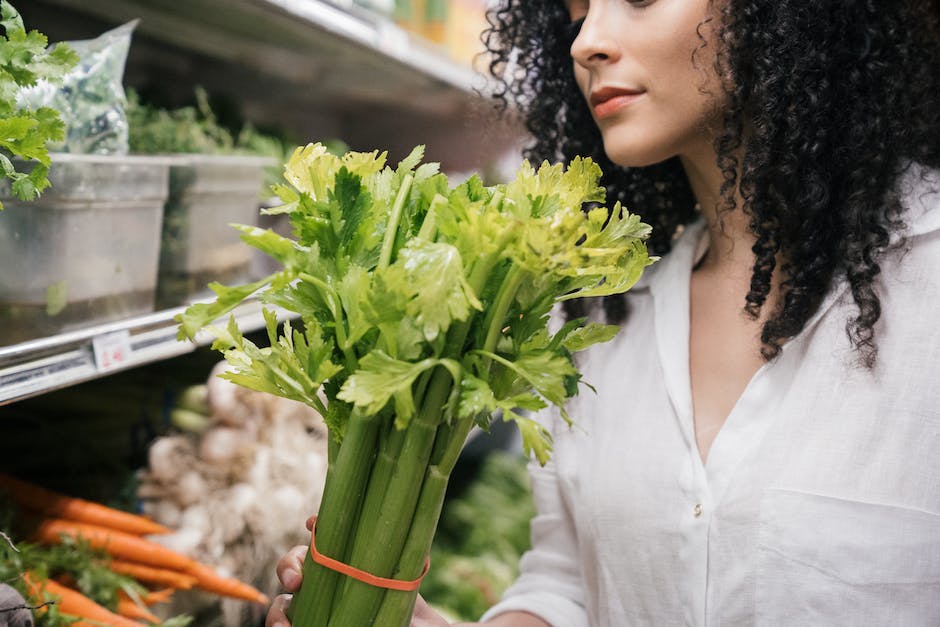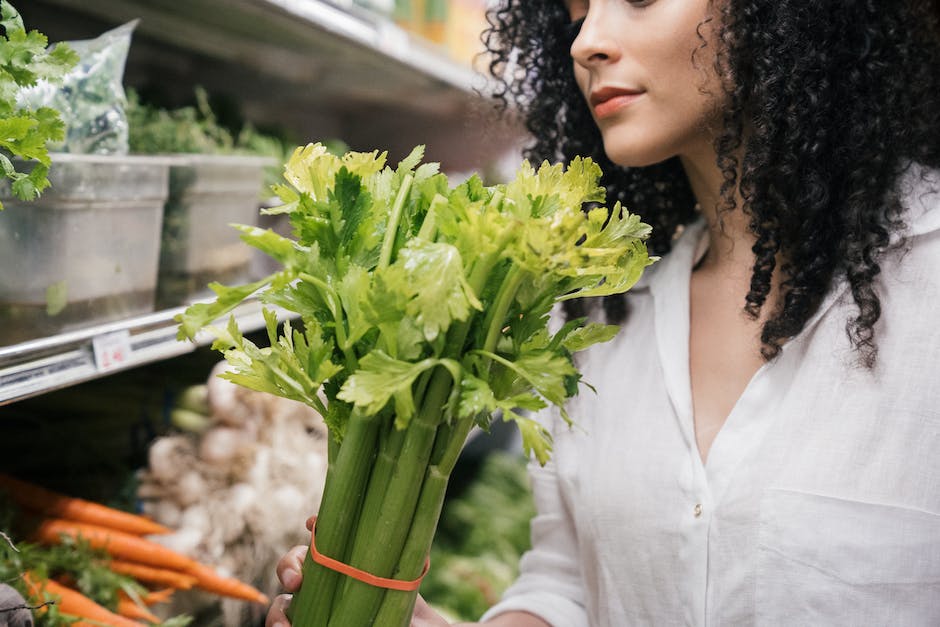Grow Your Own Celery from a Stalk Easily

In the realm of horticulture, growing your vegetables from scraps can be an incredibly rewarding venture. Among the many vegetables one can regrow, celery stands out for its simplicity and speed. Think about it – with every celery stalk you’ve tossed out, you’ve been inadvertently disposing of the possibility of an entire new plant. This guide aims to demystify that process, shedding light on the processes of stalk preparation, planting, and regular care to cultivate robust, full-grown celery right from your kitchen garbage. It’s not wizardry, just patience, nurturing, and a fair bit of scientific insight.
Preparation of the Celery Stalk
Title: The Perfect Guide to Prepping Your Celery Stalks for Planting
Gardening has a magnetic charm, a unique calming effect that combines earth connection, vibrant colors, and unbelievable growth from seemingly simple starts. One plant in particular – the celery stalk – might seem like an unlikely candidate, but it’s an improbable hero of the kitchen scraps-to-garden club.
Believe it or not, you don’t need a packet of seeds to grow your own crisp and juicy celery. Instead, you can give an old celery base a new lease of life. This process of re-growing celery from kitchen waste is both economical and rewarding. It’s an easy way to dip your toe in the world of home gardening without any significant investment.
Ready to give it a go? Let’s dive into the steps of preparing a celery stalk for planting.
- Chop That Celery Base
- Soak in Water
- Position Well
- Keep an Eye on It
- Patience is the Key
- Ready For Planting
- Daily TLC
When you have used your celery and are left with the base, don’t dispose of it. Instead, give it a good wash and cut approximately 2 inches from the bottom. The more you slice, the better chance you’ll have for healthy regrowth.
Place the cut base in a shallow bowl or a saucer filled with lukewarm water. It’s important to submerge only the bottom half, allowing the top to see sunlight and breathe. It’s like turning the bulb into a little island in a shallow sea – full of life anticipation.
Choose a sunny spot in your home to place the bowl—next to a windowsill, on a patio, or in your greenhouse. Sunshine and warmth trigger the photosynthesis process and promote growth.
Monitor the bowl and change the water regularly – preferably every day or two. Keep a lookout for root growth from the base and little leaf sprouts from the top.
Within a week or so, you’ll observe small yellow leaves sprouting from the center of the base. Roots will also start to appear. These sprouts will eventually turn green as they get more exposure to sunlight.
Once the celery has sprouted, it’s ready to go into the soil. Choose a pot with good drainage or a garden plot. Make sure your soil is rich and well-drained; celery loves plenty of natural matter. Bury the celery base in the soil, leaving the leaf tips exposed to the sunlight.
Post-planting, maintain a consistent watering schedule, keeping the soil moist but not soggy. Over time, as the celery plants continue to grow and flourish, the leaves will expand into mature stalks, ready for harvesting and adding delicious crunch to your cooking.
Growing celery from the scrap is small work for significant gain. Not only does it result in crunchy bunches of fresh stalks, but it also highlights a fascinating cycle of plant life – from kitchen waste to magnificent growth. Every gardener – amateur or seasoned – can benefit from this plant resurrection technique, and magnify the wonders that come from nurturing nature in our very own backyards.

Planting the Celery Stalk
Proceeding Towards a Greener Future: Final Moves in Cultivating Replanted Celery
Amongst the myriad of gardening tasks one can delve into, bringing new life to leftover food scraps holds a certain allure; it’s both eco-friendly and cost-effective. We’ve covered the initial stages of rekindling growth within a discarded celery base, but the journey doesn’t conclude there. Here’s how to carry forward:
Step 8: The Waiting Game
After successfully transplanting your celery base into soil, attentiveness shifts from care to patience. Celery is a slow-growing plant and time is an essential ingredient to its growth. When growth does begin, expect new stalks to develop from the base in a tight cluster. These will be thinner than store-bought celery stalks but equally as flavorful and nutritious.
Step 9: Water Right, Grow Right
While waiting for sprouting, remember that Celery prefers wet (but not waterlogged) environments. Therefore, ensure that the soil remains moist, but not soaked, by watering frequently with lesser amounts. You want to maintain a balance between too dry and too wet to avoid hindrances such as wilting or root rot.
Step 10: Defense Against Pests
As all gardeners know, the risk of pests is ever-present. Celery plants can often lure aphids and slugs. Refrain from using harmful pesticides, instead, opt for organic methods like releasing beneficial insects into the area. Ladybugs especially are excellent aphid hunters!
Here’s another tip: to deter slugs, a ring of crushed eggshells around your plant will perform nicely. Slugs don’t like crawling over sharp edges, making eggshells an effective, eco-friendly deterrent.
Step 11: Harvesting – A Taste of Victory!
After about 3-4 months, your celery should be ready for harvest. The general rule of thumb is the stalks should be at least eight inches tall. To harvest, don’t yank the entire plant from the soil; rather, cut stalks from the outside of the bunch as needed.
Step 12: The Cycle Begins Again
Another fantastic aspect of growing celery from a base is that you can do it again, repeating the process with the base of your newly harvested plant. This grants an ongoing cycle of growth, thereby allowing a constant supply of fresh celery, all year round.
Growing celery from kitchen scraps makes for an enjoyable and sustainable hobby, bringing a sense of fulfillment that’s unparallel. It represents the beautiful cycle of life through its regenerative process — demonstrating that even the discards can find a place under the sun, given the right care and time. So press forward with patience and enthusiam, and you’ll embrace the freshness of home-grown celery in no time!

Celery Stalk Care
Step 8: The Waiting Game
Here comes the part that all gardening enthusiasts fondly understand: the waiting game. Once the celery is bedded in the soil, it’s time to let it do its thing. Patience is a virtue, particularly with celery, which can take anywhere from three to four months to reach maturity. During this time, care for the celery plant and keep an eye out for its growth stage. Each phase represents a milestone in the marathon that is growing celery.
Step 9: Water Right, Grow Right
Celery plants thrive when they are well hydrated. They prefer moist soil, but not waterlogged conditions. It’s essential to strike the right balance when it comes to watering. Use a gentle watering method, like a mister or watering can, to avoid washing away the soil or damaging the growing plant. Water the plant every couple of days or whenever the soil appears to be drying out. Also, the use of mulch around the base of the plant can help retain moisture and protect it from extreme weather.
Step 10: Defense Against Pests
As your celery plant matures, it might attract pests like aphids and whiteflies. Don’t let these villains sabotage the growth journey. Use natural pest-repelling methods, such as introducing beneficial insects like ladybugs to the garden or using a homemade insecticidal soap spray. Regularly inspect the leaves for any signs of damage or disease and act promptly if you spot something worrisome.
Step 11: Harvesting – A Taste of Victory!
Oh, the joie de vivre of seeing your celery ready for harvest! You can start harvesting when the stalks reach about 8 inches tall. Use a sharp garden knife to cut the stalks from the base, leaving about 1-2 inches above the soil to encourage regrowth. Remember, the lighter the stalks, the more tender they will be. Taste the fruits (or rather veggies) of your labor and bask in the rewarding moment of your gardening journey.
Step 12: The Cycle Begins Again
Isn’t it thrilling to know that celery is a cut-and-come-again plant? Once you have harvested, celery will continue to regrow as long as conditions are favorable. Make sure to continue watering and protecting it from pests. This continuous cycle of growth, harvest, and regrowth can occur for up to a year, making growing celery an ongoing garden project and an enriching hobby. One celery plant can provide batches of crispy, green stalks for your meals, making it a flavorful and satisfying addition to your gardening repertoire.

While it’s true that growing celery from the stalk demands a good measure of diligence, mindfulness, and tender loving care, it’s an exciting and rewarding endeavor that gives you two-fold benefits. Not only do you get to enjoy the fruits (or, rather, stalks) of your labor, it’s also environmentally-friendly and a surefire way for you to know exactly where your food comes from. So the next time you find yourself in possession of a celery bottom, remember – there’s potential growth in that ‘waste’. Start your self-sustaining food journey today, nurture your green thumb and watch as your kitchen waste turns into organic bounty right before your eyes.



